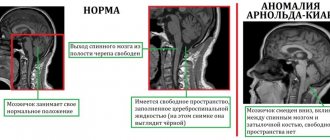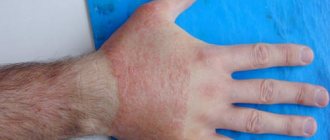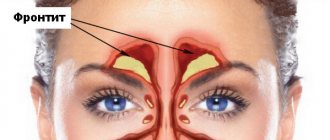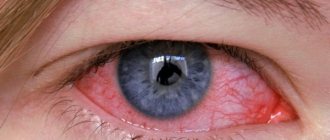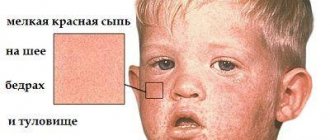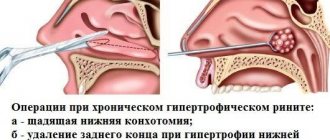Benign joint hypermobility in children
As you can see, nothing in the name itself suggests that hypermobility is a pathology, disease or other disorder.
Therefore, today hypermobility in children is treated as a feature of the human body. This syndrome is interesting to study, but hypermobility does not have any particular clinical significance. For a long time, joint hypermobility in children was practically not defined or described at all. It was more important for doctors to identify problems in the movement of joints than to observe patients with absolutely healthy, but too mobile joints. Therefore, hypermobility was perceived as normal, and when tests were taken in children with hypermobility, no abnormalities were found, for example, the same rheumatoid factor.
Joint hypermobility, or popularly laxity, can be found in a large number of people with normal health indicators. Research has found that rates of hypermobility in humans vary depending on race, age, and how the syndrome is diagnosed.
Most often, the syndrome occurs in female children; in males it is diagnosed ten times less often. The majority of women with joint laxity are in Asia, Africa and the Middle East. Most girls do not have any problems with hypermobility, they do not suffer from joint pain, but, on the contrary, receive peculiar bonuses from their natural characteristics - from childhood they become circus gymnasts, ballerinas, acrobats, and participate in areas where special flexibility is needed.
Causes of joint hypermobility
Acquired excessive joint mobility is observed in ballet dancers, athletes and musicians. Long-term repeated exercises lead to stretching of the ligaments and capsules of individual joints. In this case, local hypermobility of the joints occurs. Although it is obvious that in the process of professional selection (dancing, sports) persons who are initially distinguished by constitutional flexibility have a clear advantage, the fitness factor undoubtedly takes place. Changes in joint flexibility are also observed in a number of pathological and physiological conditions: acromegaly, hyperparathyroidism, pregnancy.
Generalized joint hypermobility is a characteristic feature of a number of hereditary connective tissue diseases, including Marfan syndrome, osteogenesis imperfecta, and Ehlers-Danlos syndrome. These are rare diseases. In practice, a doctor much more often has to deal with patients with isolated joint hypermobility, not associated with training and in some cases combined with other signs of weakness of connective tissue structures.
It is almost always possible to establish the familial nature of the observed syndrome and concomitant pathology, which indicates the genetic nature of this phenomenon. It has been noted that hypermobility syndrome is inherited through the female line.
Definition of hypermobility
Joint hypermobility in children is often regarded as a physiological norm, especially when a genetic predisposition is identified. In this case, the mobility of the joints exceeds physiological norms, so the child or adult is able to perform some movements that exceed normal ones.
In children, joint hypermobility occurs in approximately 10-25%, but with age this ability decreases without proper training. If you purposefully develop such mobility, for example, by regular athletics, ballet or acrobatics, joint mobility is maintained.
The phenomenon of hypermobility also has significant disadvantages. If this ability causes discomfort, pain and impairment of motor activity, a diagnosis of “benign joint hypermobility syndrome” is made. This is due to premature wear of the articular apparatus, as well as damage to adjacent soft tissues.
Patients with this disease often also suffer from disorientation in space, as a result of which cases of injury are common.
In addition, this condition is characterized by the following features:
- According to statistics, about 4-10% of all people do not experience problems due to joint hypermobility.
- In addition to increased mobility of one group of joints, the phenomenon of generalized hypermobility may occur, in which this condition is characteristic of several types of joints.
- Genetic predisposition is more common in residents of Asia, Africa and the Middle East.
- In women, increased joint mobility is more common than in men.
- Joint hypermobility can be a symptom of certain connective tissue, ligament and tendon diseases. Such pathologies include Marfan syndrome and Ehlers-Danlos syndrome. In addition, it may be a sign of certain chromosomal abnormalities, genetic diseases, and rheumatoid diseases, in particular juvenile rheumatoid arthritis.
Joint hypermobility syndrome is most often caused by a hereditary predisposition. In approximately 27-65% of cases, patients with this feature had close relatives in the family with the same ability.
The following pattern was also noted: patients with joint hypermobility also often suffer from congenital mitral heart valve disease. This is due to the peculiarities of the formation of connective tissue, which often strengthens independently with age.
The advantages caused by this feature are undeniable. This helps you move more easily and fluidly, perform complex physical exercises, and also engage in certain activities, such as playing a musical instrument or dancing.
Is hypermobility dangerous? In some cases, yes. In this condition, the joints are more vulnerable and more quickly susceptible to negative processes.
In addition, joint hypermobility syndrome in adults and children can lead to the development of joint diseases and complications caused by this feature.
The most common negative consequences are:
- Pain syndrome in various parts of the articular joints;
- Dislocations and subluxations of articular cartilage;
- Flat feet and development of foot pathologies;
- Inflammatory diseases of joints and adjacent tissues;
- Development of arthrosis even at a young age;
- Excessive stretching of the skin, the appearance of folds and stretch marks;
- Phlebeurysm;
- Failures in the operation of internal systems;
- High risk of hernia formation;
- Rachiocampsis.
In children, the hip joints are often affected, which also leads to the development of serious complications.
It is noteworthy that joint mobility may weaken with age, but during pregnancy, many women note the return of such abilities. This is due to hormonal changes in the body during this period, as well as preparation for future childbirth. Usually, after the baby is born, the structure of the joints returns to normal without medical intervention.
Any joint can provide movement only to a certain extent. This happens due to the ligaments that surround it and act as a limiter.
In the case when the ligamentous apparatus does not cope with its task, the range of movements in the joint increases significantly.
For example, in this condition, the knee or elbow joints will be able not only to bend, but also to hyperextend in the other direction, which is impossible during normal operation of the ligaments.
There are various theories about the development of this condition. Most doctors and scientists believe that excessive joint mobility is associated with collagen stretchability. This substance is part of ligaments, the intercellular substance of cartilage, and is ubiquitous in the human body.
When collagen fibers stretch more than usual, movement in the joints becomes freer. This condition is also called weak ligaments.
Prevalence
Joint hypermobility syndrome is quite common among the population, its frequency can reach 15%. It is not always recorded by doctors due to minor complaints. And patients rarely focus on this, believing that they simply have weak ligaments.
Joint hypermobility is common in children. It is associated with metabolic disorders, insufficient intake of vitamins from food, and rapid growth.
At a young age, the syndrome is more often observed in girls. Elderly people rarely get sick.
Joint hypermobility syndrome is in most cases a congenital pathology. However, it cannot be classified as an independent disease. Hypermobility of the joints is only a consequence of a disease of the connective tissue that makes up the joints and ligaments.
Often, even with the most thorough examination, connective tissue diseases cannot be identified. Then doctors talk only about a violation of its development. The joint manifestations will be the same, but the prognosis for the patient is more favorable and there are fewer complications.
There is also artificial excessive mobility of joints. It is found in sports - gymnastics, acrobatics. For musicians and dancers, choreographers, hypermobile joints are a great advantage. In this case, hypermobility is developed specifically - through persistent training, stretching of muscles and ligaments. Elastic ligaments provide the body with the necessary flexibility.
But even with the longest training, it is difficult for the average person to achieve great success.
This is usually achieved by those who initially have a predisposition to hypermobility syndrome. Therefore, artificial joint hypermobility can sometimes be considered as a pathological option along with congenital hypermobility.
Joint hypermobility can be one of the manifestations of other pathologies. Today, medicine knows several such diseases:
- The most common disease in which excessive joint mobility is pronounced is Marfan syndrome. Until recently, all cases of “weak ligaments” were associated with it. People with Marfan syndrome are tall, thin, with long arms and very mobile, extremely flexible joints. Sometimes their joints resemble rubber ones in terms of flexibility, especially with regard to the fingers.
- Later, attention was paid to another disease - Ehlers-Danlos syndrome. With it, the range of joint movements is also extremely wide. It also adds to the excess elasticity of the skin.
- A disease with an unfavorable prognosis - osteogenesis imperfecta - like others, is manifested by significant weakness of the ligamentous apparatus. But in addition to weak ligaments, osteogenesis imperfecta is characterized by frequent bone fractures, hearing loss and other serious consequences.
Some “looseness” of the joints may occur during pregnancy. Although pregnancy is not a disease, hormonal changes are observed in a woman’s body.
These include the production of relaxin, a special hormone that increases the elasticity and extensibility of ligaments.
In this case, the good goal is to prepare the pubic symphysis and birth canal for stretching during childbirth. But since relaxin does not act on a specific joint, but on the entire connective tissue, hypermobility also appears in other joints. After giving birth, she safely disappears.
All symptoms associated with this pathology will be observed exclusively from the articular apparatus. People with hypermobility syndrome will have the following complaints:
- Frequent joint pain, even after minor injuries and normal physical activity. The knee and ankle joints are especially affected by this syndrome.
- Dislocations, subluxations of joints.
- Inflammation of the membrane lining the joint cavity - synovitis. It is important that you can always notice a connection with stress or injury.
- Constant pain in the thoracic spine.
- Curvature of the spine - scoliosis. Even with normal loads - carrying a bag on your shoulder, sitting incorrectly at a table - scoliosis will appear early, and the curvature will be significant.
- Muscle pain.
Diagnostics
Hypermobility syndrome is recognized by an attentive doctor at the patient’s first visit. It is enough to ask him carefully about his complaints, their connection with the load and carry out the simplest diagnostic tests:
- Ask to touch the inside of your forearm with your thumb.
- Offer to bring the little finger to the outside of the hand.
- Check whether a person, bending over, can rest his palms on the floor. The legs remain straight.
- See what happens when you straighten your elbows and knees. With hypermobility syndrome, they hyperextend in the other direction.
Additional examinations are needed if the doctor suspects a specific connective tissue disease. Then the following methods are used:
- radiography;
- CT scan;
- biochemical blood test;
- consultations with related specialists - cardiologists, rheumatologists, ophthalmologists.
You should always remember that joint mobility is only one symptom of connective tissue disease. And all the organs of which it is a part will suffer.
And often such patients have complaints from the heart, vision, headaches, fatigue, muscle weakness, and tinnitus.
Treatment
There is no method that would eliminate the cause of hypermobility syndrome. But this does not mean that such people are left without medical care. Therapy is mainly aimed at getting rid of complaints.
Clinic
Hypermobility of the knee joints
Studying the clinical picture of different patients with the presented syndrome, experts note that both children and adults have a pronounced feeling of discomfort in the joints, the symptoms manifest themselves especially strongly after physical activity, as well as during the period of growth of bone structures.
In most cases, discomfort is present in the legs, but can also be localized in the upper extremities. Joint pain most often affects the knee joint, but there have been cases where the patient complains of discomfort in the ankle. Those people who engage in professional sports activities also suffer from soft tissue swelling and joint effusion.
The results of histological studies confirm the absence of inflammatory processes, and the general clinical picture is very similar to the condition after injury. The composition of synovial fluid is characterized by a small amount of protein and other cells. The degree of damage, in most cases, remains within normal limits, which allows the patient to continue playing his favorite sport.
As mentioned earlier, the majority of clinical cases of this pathology are classified as a congenital condition of the joints, but hypermobility syndrome is not an independent disease. Increased mobility of joint nodes occurs against the background of the pathological state of the surrounding connective tissue, which is the main component of ligaments and joints.
Another characteristic is the fact that in most cases, even when experienced specialists carefully carry out all the necessary studies, it is not possible to identify connective tissue pathologies. In this case, doctors diagnose a tissue development disorder. Symptoms regarding joints will be typical, but the prognosis is favorable, due to the low likelihood of complications.
Pathology often occurs in ballerinas and gymnasts
Sometimes artificially created increased mobility of joints is diagnosed. A similar condition is diagnosed in professional athletes who engage in gymnastics or acrobatics. Ballerinas also try to develop a similar joint ability through increased training aimed at stretching the muscular-ligamentous apparatus. In this way, it is possible to increase the elasticity and improve the flexibility of the body.
But it is worth noting that even excessive and prolonged training of an ordinary, healthy person will not give the same results as with hypermobility. Therefore, an artificially created condition is considered by doctors as a pathology.
Pathological hypermobility
In some cases, hypermobility syndrome may be a manifestation of severe pathology in adults. It is accompanied by Marfan syndrome, osteogenesis imperfecta, and Ehlers-Danlos syndrome. With benign hypermobility, which is not associated with pathologies, this feature is inherited in an autosomal dominant manner.
When benign hypermobility manifests itself, the features of this condition are manifested only by increased joint mobility. With pathological hypermobility, patients experience pain in parallel with joint laxity. Hypermobility can be recognized using conventional methods for diagnosing pathologies of the musculoskeletal system, as well as using the method of Brayton, a scientist who developed his own criteria for this condition.
Inflammation of the joints in the legs
According to statistics, joint hypermobility in people who do not suffer from joint pathologies ranges from four to thirteen percent. At the same time, the largest part (66%) of pathological hypermobility is found in children suffering from arthralgia. This is not the only combined pathology. Hypermobility can occur together with:
- Down's disease;
- Larson syndrome;
- lupus erythematosus;
- osteoarthritis;
- Ullrich's disease;
- metabolic disorders;
- recurrent injuries;
- juvenile rheumatoid arthritis.
REFERENCE! Patients suffering from pathological joint hypermobility suffer from chronic pain and other neuromuscular symptoms that are caused by defects in connective tissue.
Causes
In medicine, many theories are considered regarding the likelihood of the syndrome occurring. Most scientists agree that the most likely cause of increased joint mobility is collagen extensibility. But the whole point is that it is an integral part of muscles, ligaments, cartilage and other structural tissues. When collagen fibers are stretched beyond normal, the joints can perform a greater range of motion, which causes ligament weakness.
It is worth noting that hypermobility syndrome is a fairly common phenomenon, and in medical practice a similar condition is diagnosed in 15% of the population. However, doctors do not detect it every time, because the symptoms are not expressed enough, and patients tend to think that they have weak ligaments.
Speaking about childhood pathology, most cases have a direct connection with metabolic disorders, low intake of vitamins in food, and rapid growth. Doctors also note that the majority of patients are representatives of the fairer sex. People in the older age group practically do not suffer from hypermobility.
Also, the presented syndrome often develops in conjunction with certain pathologies. Let's take a closer look at what diseases can cause hypermobility.
Marfan syndrome. This pathology is the most common provocateur of the development of hypermobility of articular joints. It was with him that almost all cases of weak ligaments that could be diagnosed were associated. A characteristic feature for patients is excessive thinness, they are tall, their upper limbs are elongated and quite mobile, their joints are excessively flexible. In some cases, it may seem that their limbs are like rubber, and especially their fingers.
Ehlers-Danlos syndrome. Doctors have recently begun to draw a parallel between this disease and excessive joint mobility in humans. It must be said that with this pathology, people have a very large range of motion in the joints, as well as an excessive level of elasticity of the skin.
Osteogenesis imperfecta. This pathology has a rather unfavorable prognosis. The main symptom is increased weakness of the human musculo-ligamentous apparatus. However, in addition to this, patients are still at high risk of violating the integrity of bone structures and hearing loss.
Sometimes you can observe symptoms of joint laxity during pregnancy. Of course, pregnancy cannot be called a disease, but during this period, serious hormonal changes occur in a woman’s body. In girls, one can note an increased level of production of the hormone relaxin, which increases the elasticity and extensibility of the ligaments.
The main function of this hormone is to prepare the pubic joints for stretching during labor, however, the effect of relaxin applies to all joints, and not to a specific joint, so hypermobility may be observed in pregnant women, which goes away after childbirth.
Development mechanism
The pathogenesis of the disease is associated with disorders in human connective tissue. Connective tissue is an auxiliary organ, few people know, but more than fifty percent of the human body is represented by connective tissue, which is responsible for various vital processes. Connective tissue performs protective, supporting and trophic functions, serves as the outer cover of organs and the framework of many structural elements.
There are four types of connective tissue, which differ in structure and functions. Fibrous connective tissue forms ligaments, hard connective tissue forms bones, gel-like tissue in the body is represented by cartilage tissue, but liquid connective tissue is nothing more than blood, cerebrospinal fluid, synovial fluid, lymph and intercellular fluid. Connective tissue covers almost the entire human body.
Patients with Marfan syndrome are not difficult to recognize by their special thin body type
It is quite natural that problems with connective tissue will affect the entire body as a whole. This also accounts for the variety of symptoms that appear with a particular pathology. Hard fibrous tissue has the greatest share - disturbances in its formation cause manifestations of joint hypermobility.
Severe non-inflammatory hereditary connective tissue disorders are Marfan and Ehlers-Danlos syndrome, as well as osteogenesis incomplete syndrome. An important role in the manifestation of the severity of pathology is played by the correct distribution of collagen of the first and third types. This is genetically determined.
The third type of collagen is called fibrous scleroprotein. This is a specific protein, it is detected in keratinized tissues, cartilage, bone, tendons, and lens. Also, fibrous scleroprotein makes up a quarter of the bone marrow. It is found in the skin, lung, fibers of the hematopoietic organs and blood vessels.
Examination and diagnosis
Factors such as a large fetus, breech presentation, toxicosis during pregnancy and curvature of the foot place the child in the risk category. Indeed, in these cases, the chance of the disease increasing significantly.
In general, orthopedists rarely make a diagnosis such as dysplasia in a newborn. They call this pathology a dislocation, preluxation or subluxation of the hip, which interferes with the relationship of the acetabulum with the femoral head.
But certain doctors mean by this concept various disorders of the hip joint. However, the disease can be classified only after X-ray examination and analysis of certain clinical disorders.
It is necessary to know the difference between a disorder in the development of a joint, that is, dysplasia in infants, and a delay in its development. And the diagnosis obtained through clinical studies must be confirmed using ultrasound.
If the baby is already more than 3 months old, then an X-ray examination is allowed. Because a pre-luxation can develop into a dislocation, treatment must be prompt.
An orthopedist can make a correct diagnosis even when the mother and newborn are in the maternity hospital while examining the child. After which medical observation is carried out at a local clinic. A child who falls into the risk category must undergo treatment until a final diagnosis is established.
During the survey, certain factors are taken into account:
degree of joint impairment; child's age.
It is better to carry out the inspection in a room where the air temperature will be warm. Thus, the examination will not only be comfortable, but also reliable. In addition, the child should not be hungry and absolutely calm.
In the first year of life, hip dysplasia in infants can manifest itself as follows:
Marx-Ortolani symptom; unevenness of the femoral and inguinal folds of skin; inability to completely move the hip to the side; visible shortening of the thigh.
At the beginning of the examination, the doctor compares the femoral folds. But with the development of bilateral dysplasia, the asymmetry will not be noticeable.
If the pathology is present in a child under 3 months of age, then the possibility of seeing unevenness in the folds increases. Often the shape and depth of skin folds are different. Particular attention should be paid to the popliteal, inguinal and gluteal folds.
On a hip that is affected by dysplasia, there are more folds, and they are also deeper. But this sign is not enough to establish an accurate diagnosis.
How to define hypermobility?
Many methods for diagnosing this pathology have been developed, but they are all characterized by very complex testing and a high degree of error. It is very rare to suspect this particular diagnosis, because the ability to perform non-standard movements is often innate and is perceived as something ordinary.
In addition, flexibility of movement and good stretching often help in everyday life, so most people do not realize that they have hypermobility syndrome.
In the event of health problems and the development of pathological changes in joint and connective tissue, the causes often remain unclear. The patient is given a completely different diagnosis, which is usually a consequence rather than a cause of the disease.
In addition, inherited connective tissue disorders that cause hypermobility have been described in more than 200 varieties, the most common of which are congenital skeletal dysplasia and Marfan syndrome.
Joint hypermobility syndrome in children often goes undetected unless accompanied by uncomfortable symptoms.
Treatment
If the patient has been clearly diagnosed with joint hypermobility, then the development of tactics for the therapeutic process will be based on the root cause of the development of the pathological condition, the intensity of symptoms and pain. It is also worth knowing that the presented syndrome cannot provoke disability, and if the doctor develops the correct treatment regimen, the patient will quickly recover.
First of all, to obtain a sustainable effect, the patient is recommended to reduce physical activity as much as possible, after which he begins to feel pain and discomfort in the area of the affected joint. If some joints cause severe pain, then you will need to wear special medical braces - elastic orthoses, knee pads or elbow pads, depending on the area.
For severe pain, drug therapy is indicated. Most often, to improve the patient’s condition, doctors prescribe Dexalgin, Ketanov or Analgin. Locally applied warming ointments, as well as products in the form of rubs that contain non-steroidal anti-inflammatory components, have no less therapeutic and analgesic effect.
Physiotherapy can play a special role in treatment. The use of healthy mud, laser therapy, paraffin treatment, etc. is very effective.
It is also worth saying that an excessive level of joint mobility can be stopped with special medical physical therapy or exercise therapy. In combination, the doctor will suggest performing the correct gymnastic exercises that will help make the joint stable and strong by developing muscle elasticity.
Thus, exercises will be selected not only to force the joints to bend or straighten, but also to tense the muscles. Actions where statics and strength are involved are best suited, while the rhythm of execution should be slow, but weights should not be used.
Source nogi.guru
Hypermobility syndrome (HS) is a systemic connective tissue disease, which is characterized by joint hypermobility (HMS), combined with complaints from the musculoskeletal system and/or internal and external phenotypic signs of connective tissue dysplasia, in the absence of any other rheumatic disease.
The symptoms of joint hypermobility syndrome are varied and can mimic other, more common joint diseases. Due to insufficient familiarity with this pathology among general practitioners, and in some cases even rheumatologists and orthopedists, the correct diagnosis is often not established. Traditionally, the doctor's attention is drawn to identifying limited range of motion in the affected joint, rather than determining excess range of motion. Moreover, the patient himself will never report excessive flexibility, since he has coexisted with it since childhood and, moreover, is often convinced that this is more a plus than a minus. Two diagnostic extremes are typical: in one case, due to the absence of objective signs of pathology in the joints (except for visible hypermobility) and normal laboratory parameters in a young patient, “psychogenic rheumatism” is determined; in the other, the patient is diagnosed with rheumatoid arthritis or a disease from the group of seronegative spondyloarthritis and prescribe appropriate, by no means harmless, treatment.
Constitutional joint hypermobility is detected in 7-20% of the adult population. Although most patients first complain during adolescence, symptoms can appear at any age. Therefore, the definitions of “symptomatic” or “asymptomatic” HMS are quite arbitrary and reflect only the state of an individual with hypermobility syndrome at a certain period of life.
Diagnostics
When hypermobility first began to be studied, various techniques were used to diagnose this condition. The first criteria were developed by scientists Carter and Wilkinson, who identified the main signs of hypermobility:
- passive adduction of the first finger of the hand towards the forearm;
- extension of the fingers so that they take a position parallel to the forearm;
- elbow extension more than ten degrees from normal in a normal person;
- extension in the knee joint by the same degree or more;
- hyperextension of the foot.
REFERENCE! When assessing joint hypermobility, today the most popular and effective in terms of diagnosis are the categories of the scientist Beighton.
The previous model was taken as a basis, but the second and fifth positions were significantly improved. So Beighton's categories look like this:
- passive extension of the little finger of the hand in a position of more than 90 degrees relative to the hand;
- pressing the thumb of the hand to the inside of the forearm;
- extension of the elbow joint by more than ten degrees relative to the normal position in most people;
- hyperextension of the knee by ten degrees or more;
- tilting the body with the arms towards the floor with the hand fully straightened and touching the floor with the legs straightened.
The criteria for hypermobility are assessed in points; each has its own number, with a maximum of nine points. For some time, Beighton’s categories were criticized by other physicians; more complex diagnostic methods were developed, but clinically the Beighton diagnostic grid turned out to be the most correct and most convenient to use, which doctors still use to this day when assessing joint hypermobility.
Criteria
There are certain parameters for assessing the degree of joint hypermobility:
- Passive flexion of the joint of the fifth finger in the area of the metacarpophalangeal joint in both directions;
- Passive flexion of the first finger towards the forearm when moving in the wrist joint;
- Hyperextension of the elbow and/or knee joint by more than 10 degrees;
- When leaning forward, resting your palms on the floor, but your knees are not bent.
For a doctor to diagnose hypermobility, the patient must have any three indicators. Speaking of assessment, they use a scale from 1 to 9, where the smallest number indicates a pathological ability to hyperextend. A reading of up to two is considered normal.
Also, for a more accurate assessment, they use a graduated scale, which evaluates movements in each joint from 2 to 7, but this technique is rarely practiced.
Causes and treatment of joint hypermobility
If a patient has pathological hypermobility of the joints, questions about the treatment of this disorder will certainly arise. In order to relieve the pain that constantly torments patients, doctors prescribe local treatment - pain relief creams or ointments, gels with an anti-inflammatory effect. Today there is no shortage of non-steroidal anti-inflammatory drugs, so patients can successfully select the optimal drug with good results.
Treatment of hypermobility syndrome should begin in childhood
It is important to carry out physical therapy – all exercises are selected individually, they are aimed at strengthening muscles, ligaments and tendons. Post-isometric stabilization, sensory-motor stimulation, and scapular exercises have a good effect. It is important for patients to organize:
- psychological support;
- choose a daily routine;
- physical activity mode;
- correlate nutrition;
- influence metabolic processes.
These measures are of particular relevance for young patients under twenty years of age, since these measures can significantly alleviate the condition and largely eliminate the manifestation of joint hypermobility syndrome. The leading method of therapy will be kinesiotherapy - such treatment is selected individually, performed in the most comfortable home conditions in order to strengthen the muscle corset near problem joints.
ADVICE! Patients are recommended to perform both dynamic and static exercises. To practice correct movements, it is recommended to begin exercises in an orthosis to support the joints. Physiotherapeutic treatment can be used to relieve severe pain.
Drugs that act on metabolic processes in connective tissue are indicated as drug therapy. The following groups of drugs resist the disease:
- means for activating collagen formation and maintaining redox processes in the body - these are ascorbic acid, calcitonin, B vitamins, additional microelements;
- means for correcting the synthesis and catabolism of glycosaminoglycans - glucosamine, chondroitin, collagen;
- stabilizers of mineral metabolism - alfacalcidol and other preparations with vitamin D;
- drugs for correcting the bioenergetic state - ATP, phospholipids, polyunsaturated fatty acids, essential amino acids.
If patients do not have mitral valve prolapse, then most of them are recommended to undergo normal physical activity and regular training. Is physical exercise dangerous for heart disease and hypermobility? The answer is simple - restrictions in sports can only be in case of uncontrolled tachoarrhythmia, dilatation of the aortic root, syncope, and left ventricular dysfunction. Pregnancy is not contraindicated in case of joint hypermobility syndrome.
If joint hypermobility syndrome is combined with mitral valve prolapse and patients do not feel well, patients are recommended to take beta-blockers, it is necessary to give up bad habits and addiction to coffee. Palpitations and postural hypotension can be partially relieved by adjusting water and salt intake, wearing compression garments, and taking mineralocorticoids.
As stated earlier, hypermobility is not a separate disease, but rather a feature of the structure of the joint. The condition itself does not require medical intervention; help is needed only in case of negative manifestations.
With the concomitant development of the inflammatory process in the tissues, painkillers, hormones and non-steroidal anti-inflammatory drugs are used. You can also use compresses and ointments that reduce pain and provide a warming effect.
If there are no medical contraindications, physiological procedures, manual therapy and alternative treatment methods, such as acupuncture, are also used. Therapeutic gymnastics gives good results. It must be performed according to the recommendations of a specialist and an individually selected technique.
The main difference from conventional exercises is the maximum use of muscles and minimal stress on the joints. It is very good to use various swimming techniques for these purposes, as well as Pilates classes.
In addition to a regularly performed set of exercises, it may be necessary to purchase a special orthosis, depending on the location of the problem. Hypermobility of the knee joints involves the use of protection for this area; for shoulder or elbow mobility, wearing a different type of orthosis.
Treatment of joint hypermobility is not limited to specific terms; it all depends on the degree of progression of the pathology and the individual characteristics of the patient. In childhood, consultation with an orthopedist and regular exercise are required. This will help prevent musculoskeletal disorders, as well as avoid overuse injuries caused by weak connective tissue.
Due to the fact that hypermobile joints are most often represented by genetic abnormalities, effective methods for preventing such conditions have not been developed. Typically, standard recommendations include control of posture, avoidance of traumatic sports and excessive physical activity.
Hypermobility syndrome, what it is and the possible consequences of such conditions are described in the information provided. Despite the fact that such pathology is rarely a cause for concern and often patients are not even aware of their condition, increased mobility can cause negative accompanying symptoms.
Joint hypermobility syndrome is a pathological disorder in the structure of the musculoskeletal system, which is characterized by excessive mobility of articular joints, not associated with the presence of other rheumatic pathology. This syndrome is considered hereditary and usually some members of the patient's family also have such abnormalities.
It is not completely known how common joint hypermobility is in the population. It is known that the European race is least susceptible to this disease. According to statistics, pathology is more common in women. Among children, such deviations at various stages are found in 7% of subjects.
Joint hypermobility in children is difficult to identify. In the first years of life, every second child has it. Only after 12 years does its presence become a special case.
Signs of pathology:
- The fifth finger on the hand bends in both directions.
- When the wrist joint is bent, the first finger on the hand also bends.
- The elbow and knee joints are hyperextended beyond normal.
- When you bend forward, your palms reach the floor, while your knee joints remain motionless.
Additional manifestations include: Myalgia and arthralgia. The pain is predominantly localized in the knee, ankle and small joints. The degree of severity often depends on the weather, emotional changes, and in women - on the menstrual cycle.
- Acute joint pathologies - tenosynovitis, synovitis, bursitis, etc. More often they occur in combination with hypermobility syndrome. It can develop even with minimal joint trauma.
- Systematic joint dislocations. The shoulder, patellofemolar and metacarpophalangeal joints are predominantly affected. The risk of getting a sprain in the ankle joint increases.
- Development of premature osteoarthritis.
- Painful sensations in the back.
- Flat feet.
- Dorsalgia. A spinal disease characterized by chronic pain. At rest the pain disappears, but with prolonged standing or sitting it increases significantly. Other spinal diseases may cause similar symptoms, but joint hypermobility syndrome is characterized specifically by dorsalgia.
- The skin becomes overly stretchable, fragile and vulnerable. Stretch marks appear, as during pregnancy.
- The vascular system suffers. Varicose veins are possible even at a relatively young age.
- Predisposition to various hernias.
- Diseases of the respiratory system appear.
- Pathologies of the genitourinary system.
- Teeth deteriorate.
- Deviations in the functioning of the nervous system and psyche are possible.
Such deviations are caused by a special reason, which determines joint hypermobility.
The basis of the disease is considered to be a genetic deviation in the structure of collagen, a special connective protein. This is characterized by its great extensibility.
Numerous studies have confirmed that normal functioning of the musculoskeletal system requires correct interaction at the gene level. That is why the pathology is often congenital.
Due to excessive mobility, joints wear out many times faster, which leads to permanent injuries and sprains.
Excess collagen also leads to painful stretching of all other tissues of the body, which causes various diseases.
Treatment of pathology
The pathology has a variety of manifestations, and therapy should be selected taking into account the individual characteristics of the patient. It is important that the patient understands that the problem can be solved and does not threaten him with disability. To begin with, general recommendations are given.
Based on them, a person should minimize excessive stress on the joints. In case of severe pain, it is recommended to wear elastic orthoses. In addition, it is necessary to correct flat feet, if any, since it creates a painful load on the entire musculoskeletal system.
Orthopedic shoes with special insoles will help with this.
It is quite clear that if strengthening the joints does not work out, then you can increase the tone of the muscles that support them. This is done through gymnastic exercises. The load should not include dynamic movements in the articular joints. All efforts must be static. The emphasis is on problem areas.
Swimming will strengthen the entire muscle structure. Drug treatment sometimes has no visible effect, since with hypermobility syndrome, inflammatory processes in the joints are often not observed. This also explains the ineffective use of non-steroidal anti-inflammatory drugs.
In the absence, for example, of synovitis, it simply does not make sense to use corticosteroid substances. The use of various analgesics, for example, paracetamol, tramadol, etc., can relieve pain. If the syndrome is accompanied by tendinitis, bursitis, enthesopathy, then it is recommended to use anti-inflammatory ointments on a non-steroidal basis.
What treatment is given?
The defect itself cannot be corrected, but you should adhere to a lifestyle that will provide the necessary protection for your joints.
First, exercise to strengthen your muscles. Strength exercises without increased flexion-extension loads in the ligamentous apparatus. When choosing a complex, you should consult with a physical therapy doctor. This should be physical education, not sports! Swimming is very beneficial.
One of the tests for joint hypermobility
Timely correction of flat feet. In a patient with weak ligaments, other joints of the legs also begin to deform more quickly: the knees and hips. Therefore, you need to pay attention to this issue and, if necessary, start treatment with an orthopedist and wear orthopedic insoles.
For joint pain and myalgia, taking painkillers will help. Also, to strengthen cartilage tissue, the doctor may prescribe chondroprotectors, medications that affect the formation of collagen, vitamins and agents that relieve inflammation.
Physiotherapy has a good effect. Electro- and phonophoresis, applications with paraffin, amplipulse. Procedures are prescribed for pain, injuries and inflammation.
Symptoms
Joint hypermobility is manifested in itself by increased mobility, but there are also other symptoms that increase in the presence of concomitant diseases. Therefore, among the clinical manifestations, joint hypermobility syndrome most often appears:
- arthralgia;
- myalgia;
- chronic pain in one or more joints;
- synovitis
Even the slightest injuries in joint hypermobility syndrome provoke symptoms of acute bursitis, tenosynovitis, habitual shoulder dislocation, damage to the knee joints, habitual subluxation of the temporomandibular joint, meniscus tear, and arthritis. Subcutaneous hematomas can be found in patients.
Chronic non-traumatic pathologies also occur, among which the most common manifestations of a rheumatoid nature are tendinitis, epicondylitis, rotator cuff pathologies, bursitis, chondromalacia, disorders associated with compression of nerve endings, back pain, fibromyalgia, carpal tunnel syndrome. There may even be a delay in physical development, congenital subluxation of the pelvis.
Very often, patients suffer from multiple dislocations and subluxations that occur in a short time. Against the background of orthopedic disorders, osteoarthritis of small and large joints and constant back pain appear in young patients.
Adult factor
The knee mediopatellar fold is a fragment of the septum inside the joint
She takes part in the formation of the musculoskeletal system in a child who is in the mother’s womb. When the baby is born, the fold, having lost its functionality, slowly dissolves. Sometimes this process slows down. The rest of the fold is preserved.
For this reason, with heavy loads on the knee joint, inflammation of the rudiment develops. Hypertrophy of the mediopatellar fold of the knee joint develops in cyclists and loaders. This is a specific pathology, but it is often confused with a meniscus injury.
Characteristic symptoms
Shortening of the hip is a clear sign of dysplasia. This phenomenon occurs due to the displacement of the femoral head, which moves away from the acetabulum. The symptom indicates the presence of the most severe form of the disease.
In addition, if the child bends his knees, then the painful joint will be lower. When determining the diagnosis, the Marx-Ortloany symptom is of no small importance. This name for the symptom came about because it was described by two different doctors.
The method is as follows: while spreading the half-bent legs to the sides, you need to monitor their movement. In case of dislocation, the femoral head will move into the acetabulum at the moment of extension, and the process of movement itself will occur with a push.
Such a test was described in the 30s of the last century. But even today, it is actively used to make a correct diagnosis.
Although, if after this test the fears are confirmed, this does not guarantee the presence of dysplasia. A healthy child can also slip in 4 out of 6 cases.
Only 12% of 40% of cases are subsequently confirmed to have hip dysplasia. In addition, as you grow older, the information content of the symptom decreases.
To avoid the slightest doubt, it is necessary to confirm the diagnosis using X-rays. But in infants, the acetabulum and femoral head are cartilages that cannot be seen on an x-ray.
Therefore, other methods of assessing radiographs are used. Therefore, lines are drawn on the x-ray to help find the acetabular angle, thereby determining the condition of the hip.
With hip dysplasia in infants, the ossification nucleus of the head moves upward. Such nuclei are formed no earlier than 6 months in boys and 4 months in girls. In this case, the acetabular angle is at least 20 degrees in babies over three months of age and at least 30 in newborns.
An ultrasound is performed when symptoms characteristic of dysplasia are detected in children under 3 months of age. This diagnostic method is safe and accurate. In addition, it allows you to determine the displacement of the head during movement.
